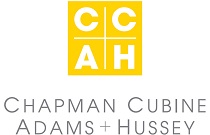
|
The "New and Improved" Role of Creative in an Integrated Fundraising Campaign
|
|
Posted by Mark Rhode at Oct 24, 2013 07:00 AM CDT
|
 When I started my direct marketing career, I was taught the “40-40-20” principle. That is, 40% of what makes a direct marketing campaign successful is audience or “list,” 40% is “offer,” and 20% is “creative”.
When I started my direct marketing career, I was taught the “40-40-20” principle. That is, 40% of what makes a direct marketing campaign successful is audience or “list,” 40% is “offer,” and 20% is “creative”.
Back then, direct marketing was not integrated. Tools such as email, search and display were either nonexistent or new. If nonprofit organizations attempted a multi-channel campaign, their communications were (at best) “layered” rather than integrated. In other words, multiple communication vehicles were utilized, but often without a coherent offer and creative theme to tie them into a campaign.
Today, nonprofits are finding new levels of success by integrating their offer(s), communications and media channels in a truly integrated campaign treatment. Two things make this possible:
- full utilization of multiple digital tools (email, search, display, landing pages and website optimization) and,
- an elevated role of creative -- yes creative -- to tie all the elements of the integrated campaign together.
The American Red Cross (ARC) leveraged this elevated role of creative during its recent holiday and year-end campaign. The key challenge: Most donors think of ARC as THE organization to support when a major disaster hits. Few would associate the holidays with giving to ARC.
We at Russ Reid helped ARC tackle this challenge, and needed to test an entirely new approach in order to gain share of holiday and year-end giving. That approach needed to communicate why a gift to ARC is urgently needed at ANY time, not just during high-profile disasters.
Our overarching strategy was to create a “surround sound” effect in the marketplace. We crafted a multi-channel campaign that was a hybrid of direct response and branding designed to lift TOTAL response. The campaign employed direct response TV, print ads, web banners and transit ads to build awareness and drive donors to the website.
Americans see ARC as the organization they count on in a disaster. They’re motivated by urgent needs and human suffering. But the then-current positioning line (“Change a Life. Starting with Your Own.”) did not speak to ARC’s distinctive strength. We needed a new creative theme for the campaign that would convey the urgency of the needs -- the everyday crises -- ARC responds to all year long.
That’s why we chose “Give the gift that saves the day” as the new positioning and call to action for the campaign. We know donors identify with this compassion. It’s what motivates them as well.
That’s why the creative approach shows ARC volunteers delivering food and a hug to a hurricane victim, providing a shoulder to cry on for someone whose house just burned down, or comforting a frightened child in a shelter. In each case, we captured the moment when a victim’s face began to change from despair to hope -- evoking a feeling of gratitude or relief that ARC was there.
To call attention to these emotional moments, we placed a translucent square frame around the “heart” of each photo. In TV and web banners, the frame fades up over the photo. The frame captures the “Red Cross moment” when heartbreak turns to hope.
The creative strategy proved that the whole is indeed larger than the sum of its parts. People who saw the advertising were twice as likely to donate than those who hadn’t seen it.
TV, radio, print and online ads influenced 41% of donors. The majority of online gifts came through paid and organic search. And online gift size increased significantly over the prior year. Income increased by 26% year-over-year; the campaign achieved an 11:1 ROI on search advertising (the goal was 4).
Most importantly, more Americans brought significance into their lives by giving the gift that saves the day.
Rather than the “40-40-20” principle of the past, we’re seeing the “40-20-40” principle working today. Audience, or “list,” is still a key factor, as 40% of what makes an integrated direct marketing campaign successful. Only 20% is “offer,” and 40% is the “creative,” which holds the campaign together and gives the donor the positioning and visual cues to engage in the integrated campaign.


















